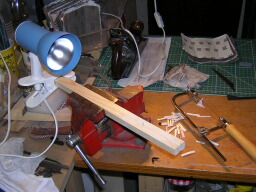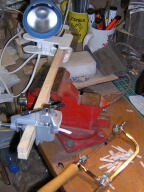|
Steps in Inlay Repair |
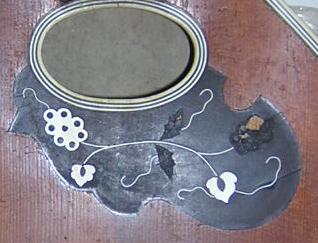 |
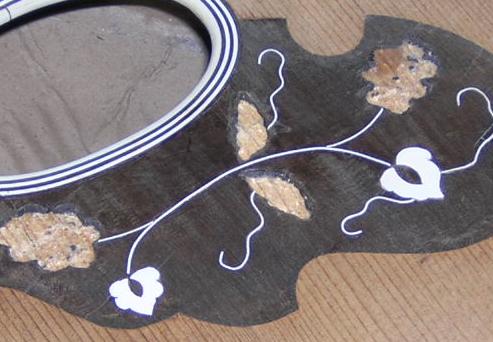 |
| In repair, the first job is to clean up the area to be
repaired. In this case it also involves the removal of the left-hand
grapes, (plastic) as the other set was missing. |
After cleaning up, all recesses are taken
back to wood, to allow new glue/paste to fit under the new pieces. |
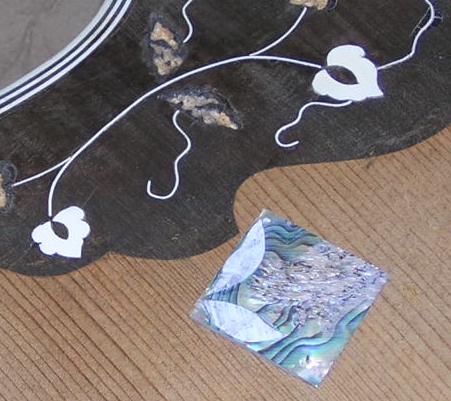 |
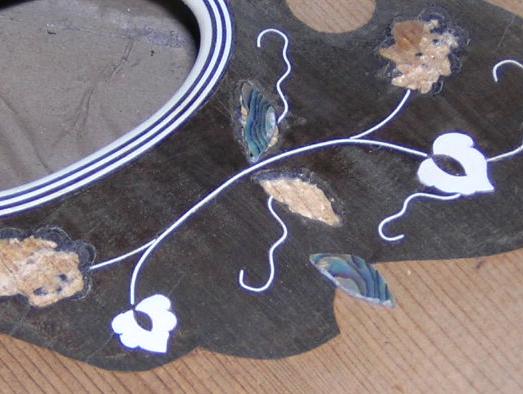 |
| I decided to do the leaves in abalone, so
made small patterns by gluing a little paper over the hole, rubbing over
with a pencil, cutting out the outlines, and sticking to the abalone. |
The abalone is then roughly cut following
the lines of the pattern using an Xacto saw, then the edges smoothed
with a file and sand paper. It does not have to be a perfect fit, which
is just as well, as this is very difficult to achieve with irregular
shapes, and rough recess edges. |
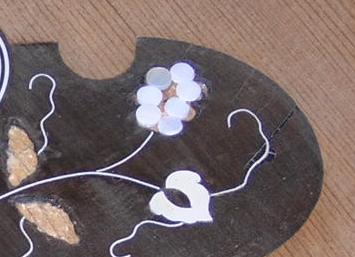 |
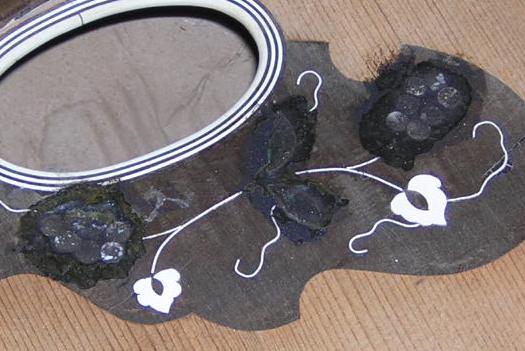 |
| I decided to rebuild the grapes from MOP
position dots. It was necessary to widen the existing holes in a couple
of spots to fit the dots in. |
All the pieces were fitted into the ebony
paste, and then further paste applied to the edges and crevices.
Paste is made from ebony dust and cascamite or pva glue, which sands well |
| |
|
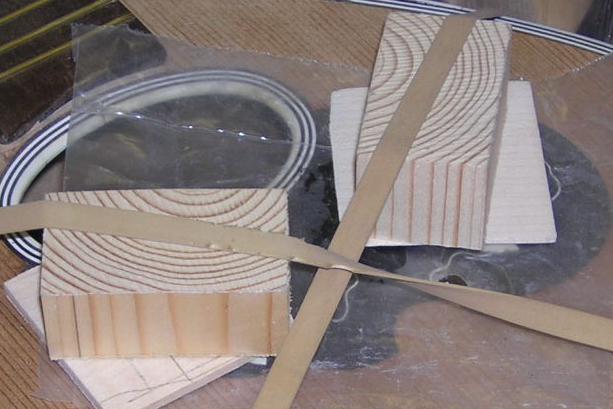 |
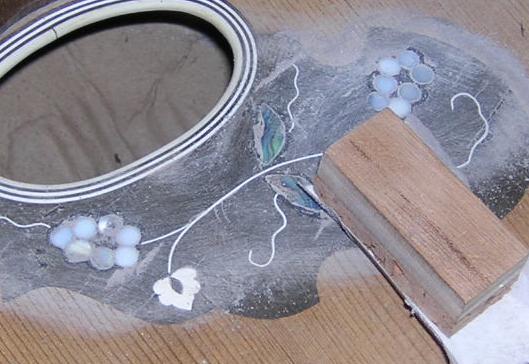 |
| The whole area was then flattened under
light pressure, to ensure the inserted MOP and abalone pieces were
level. |
Once the paste is dry, I use a small
sanding block to sand level, using progressively finer paper. |
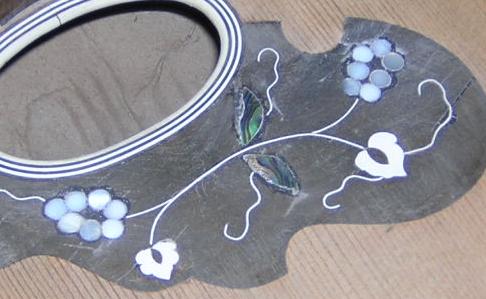 |
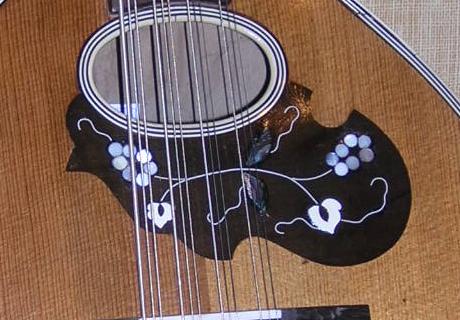 |
| It is still possible to pick out where the
filler has been applied to the original inlay material...... but the
whole surface is now flat and smooth. |
After finishing, the new pieces are much
more difficult to detect. |










